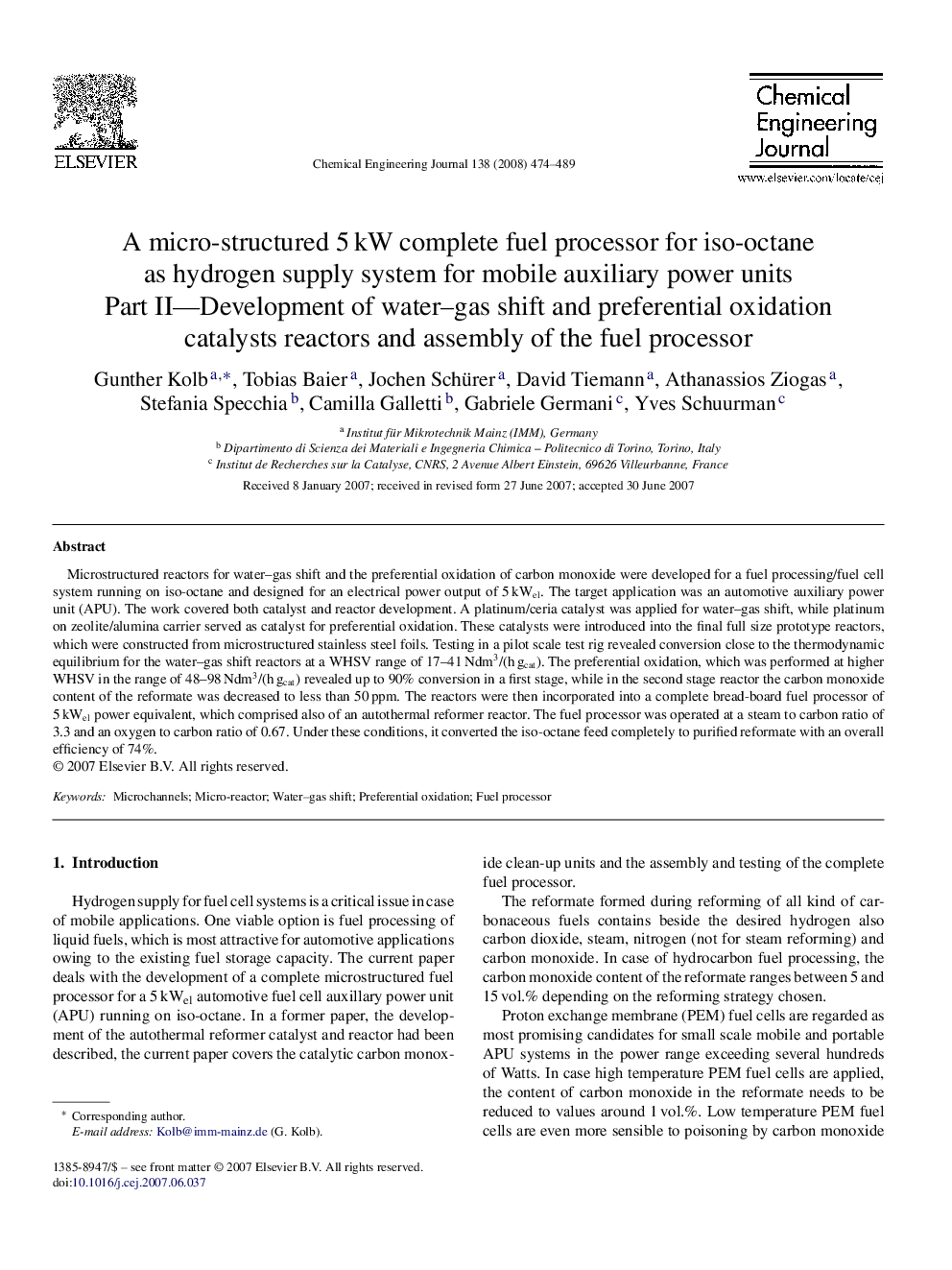| Article ID | Journal | Published Year | Pages | File Type |
|---|---|---|---|---|
| 153282 | Chemical Engineering Journal | 2008 | 16 Pages |
Microstructured reactors for water–gas shift and the preferential oxidation of carbon monoxide were developed for a fuel processing/fuel cell system running on iso-octane and designed for an electrical power output of 5 kWel. The target application was an automotive auxiliary power unit (APU). The work covered both catalyst and reactor development. A platinum/ceria catalyst was applied for water–gas shift, while platinum on zeolite/alumina carrier served as catalyst for preferential oxidation. These catalysts were introduced into the final full size prototype reactors, which were constructed from microstructured stainless steel foils. Testing in a pilot scale test rig revealed conversion close to the thermodynamic equilibrium for the water–gas shift reactors at a WHSV range of 17–41 Ndm3/(h gcat). The preferential oxidation, which was performed at higher WHSV in the range of 48–98 Ndm3/(h gcat) revealed up to 90% conversion in a first stage, while in the second stage reactor the carbon monoxide content of the reformate was decreased to less than 50 ppm. The reactors were then incorporated into a complete bread-board fuel processor of 5 kWel power equivalent, which comprised also of an autothermal reformer reactor. The fuel processor was operated at a steam to carbon ratio of 3.3 and an oxygen to carbon ratio of 0.67. Under these conditions, it converted the iso-octane feed completely to purified reformate with an overall efficiency of 74%.
